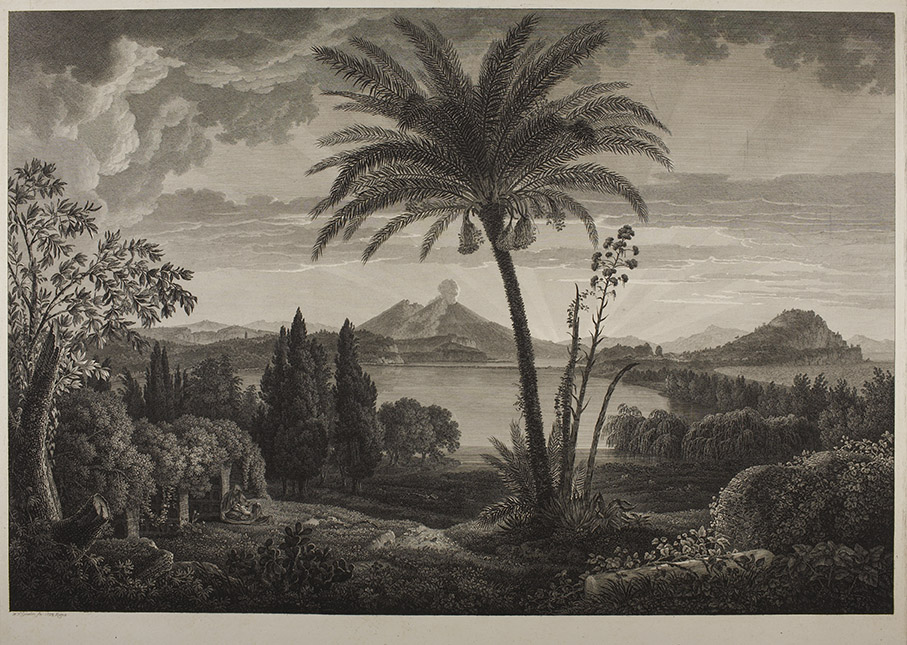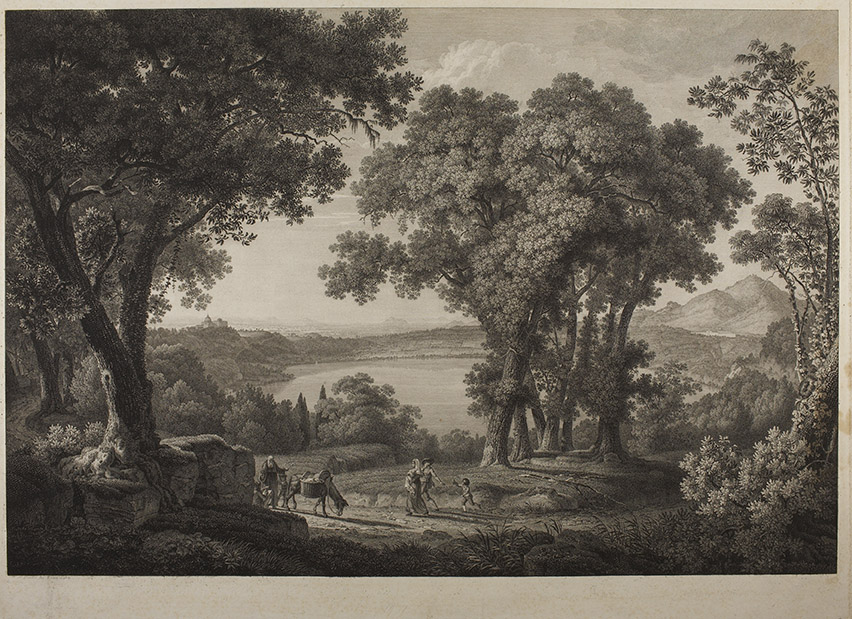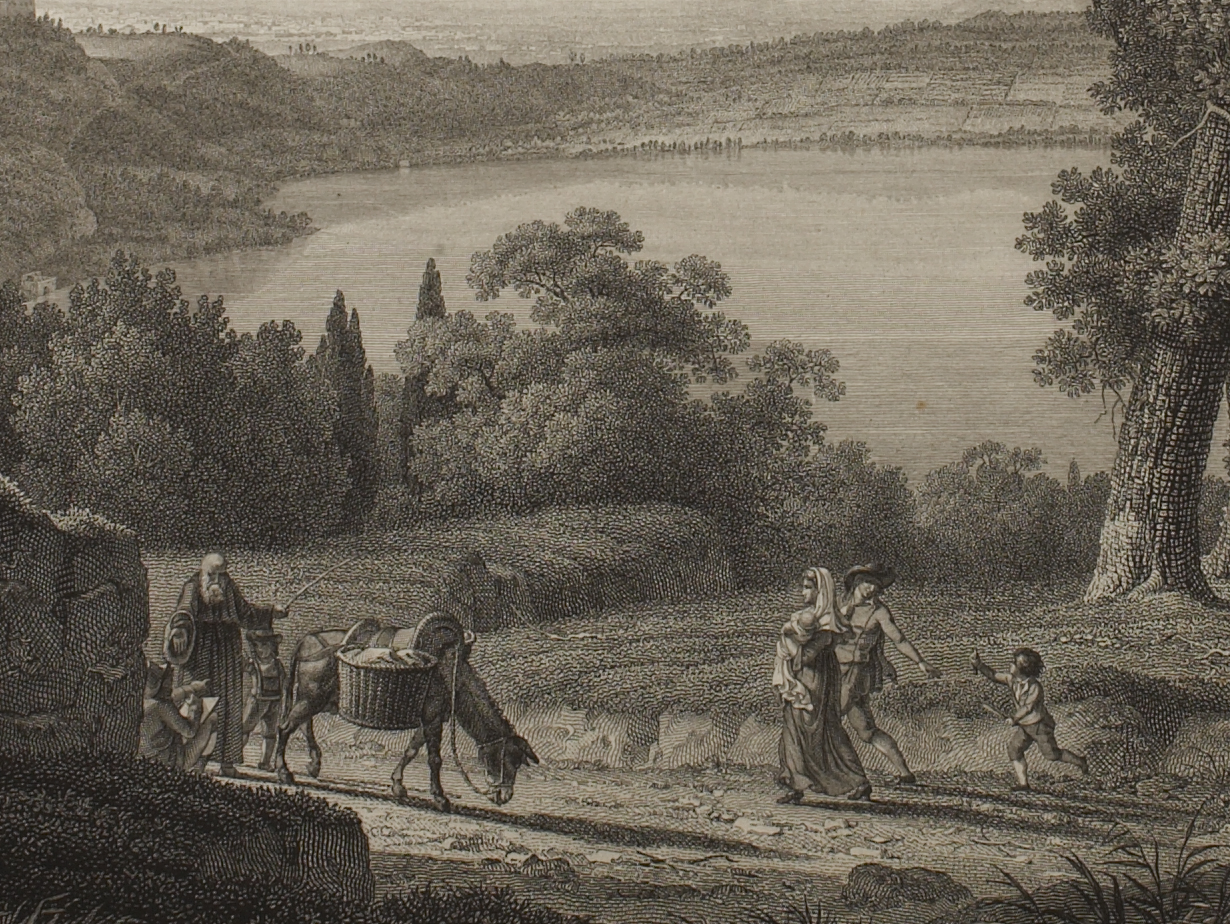
Goethe on Staffage
The following is a free translation of Goethe’s essay “Etwas über Staffage landschaftlicher Darstellungen,” published in Propyläen in 1800.
--
The introduction of historical or mythological figures into a landscape is generally dubious, because they draw the attention away from the whole and toward themselves; indeed, the image itself becomes merely a disproportionate ground for them. Moreover, they direct the interpretation of the work outside of itself, when it should rather be sought within. Accordingly, the figures employed to people a landscape will only be fitting if they accord with the character of the entire image, and can be viewed as subordinate parts that have arisen out of it.
The following pass muster: ships and fishermen on the banks of lakes and rivers; shepherds and cattle on grassy meadows; figures at rest under tall, shade-dispensing trees. In a word, the figures should render visible the conditions, or the benefits, which nature affords to creatures living in the region depicted.
Occasionally, it may even be advantageous not to include any figures at all, or at least no humans; for example, when the foreground is filled with such solemn objects as the time-wrecked works of the primeval world – ruins, tombstones, and the like.

Accordingly, in Mr. Gmelin’s engraving of the view over the Mare Morto, we cannot approve of the woman sitting by the graves, dressed in ancient costume, with two naked children in her lap.

She is meant to be a symbol of the night; but we quickly become confused if we seek her relationship to the ruined tombs, to the region of Baiae, to smoking Vesuvius, to the rising sun, and to all the other objects of nature here represented.
One could also object to the composition and to the mannered drawing of this group; but here one should not be too strict, precisely because the figures with which a landscape is peopled should not be perceived as primary, rather as subordinate things.

We find the figures in the view over Lake Albano more satisfying. A few locals pass along the road. Their son runs behind them, showing his father the bird he has caught. A Capuchin comes from the other direction, accompanied by a youth, and driving his donkey. These are at least natural motifs. They could admittedly be more substantive [gehaltreicher], and more closely related to the general goal of the image; but they are truly local, and suffice to enliven the scene.

If, however, we conclude by criticizing the draughtsman who sits at roadside, it is only in order urgently to entreat all landscape painters to abstain in future from the nearly universal custom of representing themselves in their pictures.
The artist belongs behind his work, not in front of it, beside it, or within it. The landscape painter has the great merit of placing us in a free world, in wild nature, in a way of life unknown to us. So let him leave us alone there! Let him leave to us the feelings and the observations to which he compels us. He should not sit there on the corner like an acquaintance, disturbing us through his company and proximity. If the object of his image draws our spirit into the distance, if a striking treatment places the art of nature before our imagination, let him not remind us immediately of the artist and call out to us: that is not nature, that is art which you see! This landscape is worth painting, is painterly, is painted!
In saying this, we would not wish to deny that the figures with their portfolios on their knees, whom we see so often, make a very unpleasant impression by themselves. They remind us of men who carry their weapons everywhere; or of those tailors who leave scarlet scissors sticking out of the corners of their aprons, so that no one, upon entering the workshop, might doubt that it is indeed a tailor who approaches.
-- March 2019